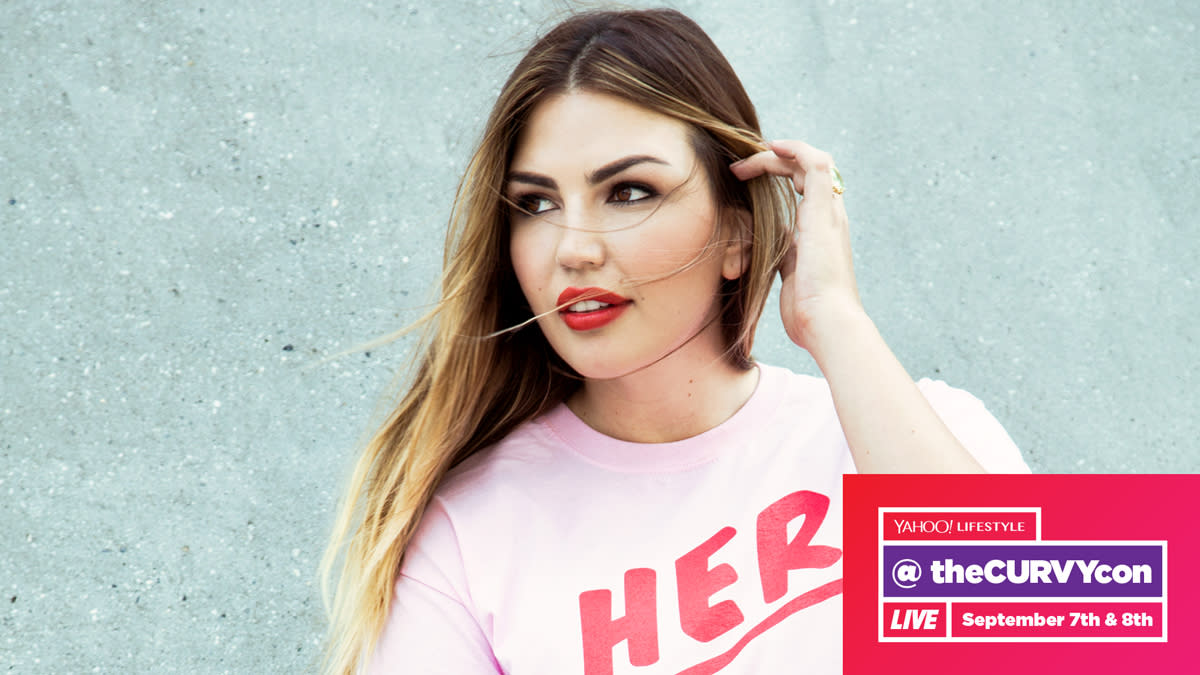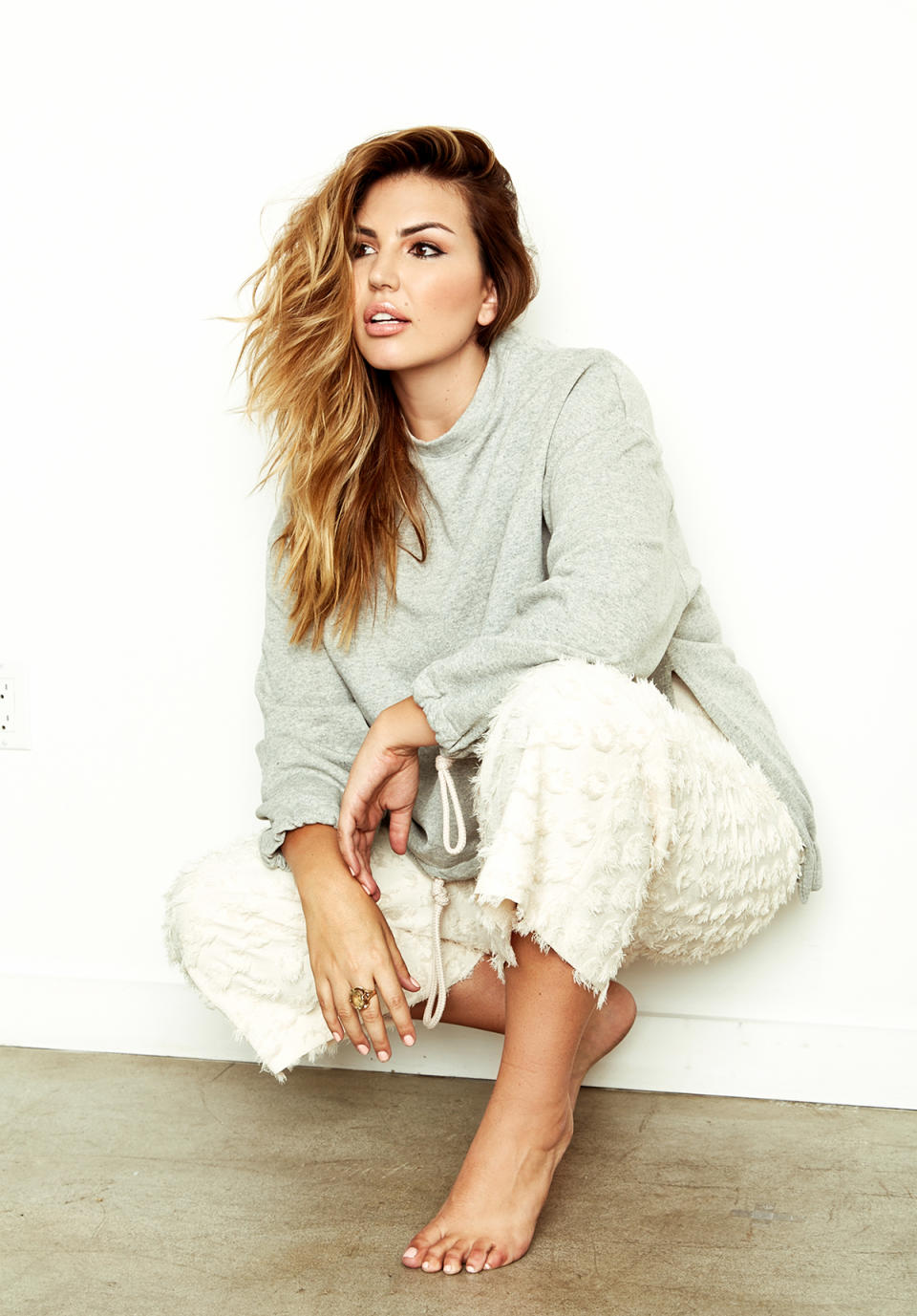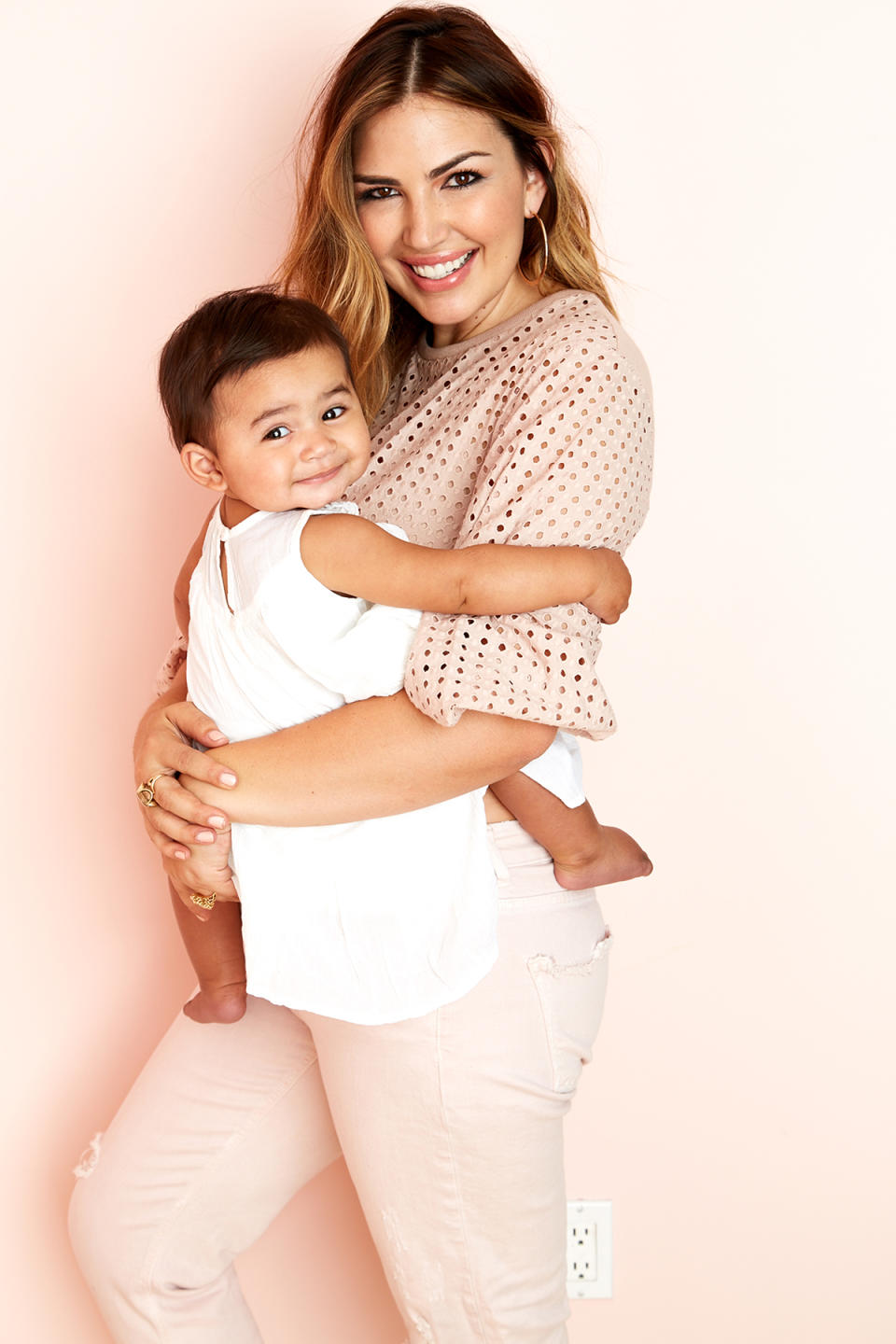'Cycle of abuse': Model Katie Willcox on what it's like to be neither plus-size or straight-size

Katie Willcox got scouted to be a plus-size model when she was 17 years old. Now 33, Willcox notes that at the time she was athletic, playing competitive volleyball and wearing a size 12.
“That’s not really plus-size,” she notes, regarding the standards of sizing as defined by the fashion and modeling industries. “I was really fit and I just had a larger frame.”
After finishing high school, Willcox moved to New York City and was almost immediately booked by Torrid, becoming the face of its latest campaign. Willcox calls the campaign a pivotal moment for plus-size fashion, one of the first times a brand thought to ask, “Wait — what if we shoot curvier stuff and have it look not awful?”
Sept. 6-8, Willcox will join other plus-size influencers and celebrities at theCURVYcon to talk about body positivity and size diversity in the fashion industry. The event will be live-streamed by Yahoo Lifestyle (bookmark this link to watch it!).
During her freshman year of college, though, Willcox stopped playing sports, had no sense of good nutrition, and then gained what she calls “the freshman 25” and found herself a size 14 — which created a challenging dynamic for her to reckon with.

“I was feeling really awful about it, but everyone at the agency was like, ‘This is so great! Now you’re really plus-size! You can book more now!’ But now I felt was that I wasn’t in good shape, but I was being rewarded for that with money and work.”
It was the first time Willcox realized that modeling was “not what I thought this was going to be. … This was not what I thought my dream was, that I was brainwashed into thinking from watching America’s Next Top Model.”
A shoot in Los Angeles for Torrid led Willcox to meet her now husband, who was designing high-quality leather accessories. The two soon decided to try to join creative forces, ultimately opening up their own store and selling to top boutiques nationwide.
“I would take the belts we made to all the high-end jobs I would work [as a model] and sell to all the stylists. I always had that entrepreneurial business sense of hustling and making the most out of what I have,” Willcox says. Their joint company also taught her, she says, how to run a business: “How to run things, how to invest in your company, what to do when you’re not making the right decisions with your money.”

After the couple found their designs being knocked off by overseas manufacturers and sold for less in stores they had previously worked with, they decided to switch gears.
“We sold everything off, and I said if we ever open another business, I want it to be a modeling agency that actually makes sense for plus-size models.” In other words, a business that was everything that Willcox’s own experiences in the industry thus far hadn’t been.
Not only was Willcox watching plus-size models increasingly get scouted by brands directly through their social media accounts, often leaving the models without representation to negotiate for them or send them out for even more work, she was also tired of the messages that models on all spectrums of the size range were being told about their bodies.
Willcox recalls one particularly notable incident when she was 23; she had lost 50 pounds, was a size 8, and was being told by her agency that she was now too small for plus-size — but if she could lose 8 inches off her hips, the agency could send her out for straight-size auditions.
“Modeling was all I had ever done, so I was like, ‘OK, let me see if I can do this.’”
She says she started using “a meal delivery service and undereating and overexercising and telling myself that I was being healthy because that is what we tell people success is — losing weight.”
A post shared by Katie Willcox (@katiehwillcox) on Sep 1, 2018 at 10:20am PDT
After getting down to 143 pounds, which Willcox describes as “skeletal on my frame,” her hips were still 37 inches — 2 inches more than what her agency had told her she needed to be.
“It was just bone. There was nothing I could do. And I remember it was Fourth of July and I had made cupcakes for everyone, but I couldn’t eat one and I broke down crying and I was like, ‘This isn’t who I am. How did I end up being this person? This isn’t me.’”
Two years later, Willcox and her husband, Bradford, started Natural Model Management, which, now nine years in, is a thriving agency. In 2011, the two started their next venture, Healthy Is the New Skinny, again out of response to what Willcox said she was seeing and feeling from her peers in the industry — and not liking.
A post shared by Katie Willcox (@katiehwillcox) on Aug 20, 2018 at 6:02am PDT
“When girls are their natural size, they’re not able to work. You’re asking them to pick an extreme end of the spectrum — you can lose 30 pounds or gain 20 pounds if you want to make a living as a model,” Willcox says about how the modeling world functions. “This is really messed up. All these young girls, all the models, hate themselves because they know they can’t look like that naturally, which makes them hate themselves and their bodies and I thought this was a cycle of abuse for women that I refuse to be a part of.”
At Natural, models are told to be the size they are — and that same message carries through in Healthy Is the New Skinny.
“Women’s sizes fluctuate. That’s part of life. You need to figure out what’s good for you and your body, but you don’t need someone to stand over and tell you what you should look like.”

Next came the book by the same name; in Healthy Is the New Skinny, Willcox sought to understand the psychology of the beauty and fashion industry and the way they force women to constantly feel not good enough — including the ubiquitousness of the phrase “self-love” in the industry right now.
“Self-love is just PR,” says Willcox. “Saying I love you to yourself in the mirror isn’t enough in a system that teaches you to hate yourself. I wanted other girls to have an understanding of the false advertising and the skinny beauty ideal, the diet industry designed for you to fail so they can keep making money.”
“When you understand stuff like that and take body image from an irrational place to an intellectual place, it’s like, ‘Wait all your craziness doesn’t work on me anymore.”
Yahoo Lifestyle will live-stream theCURVYcon 2018 on Friday, Sept. 7, from 5:30 p.m. to 7:30 p.m., and on Saturday, Sept. 8, from 9 a.m. to 5 p.m. Bookmark this link to tune in!

Read more about theCURVYcon 2018:

